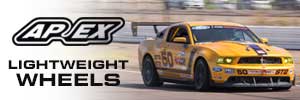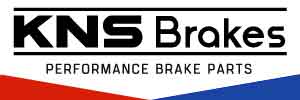I recently wanted to check the compression on all cylinders of my Boss given the issues I've been having with limp mode, presumably caused by a high misfire count. My concern was that if the misfires were caused by a lean burn at WOT, I may be doing damage to the rings and valve seals. Long story short I learned that:
1) The pressure (in PSI) in the cylinders has a linear relationship to the compression ratio. The formula is RATIO x 14.7 = PSI. Since our compression ratio is 11:1, 11 x 14.7 = 161.7 PSI. On my Boss the readings ranged fom 155 to 160 PSI, so the compression on all cylinders seems fine.
2) I also read that you could see up to a 15% difference between the highest and lowest cylinder. For me that would mean the lowest pressure I could see would be 160 - 15% = 136 PSI. I am not sure if that 15% value is really a good standard to go by, but in any event I would suspect that on a new car with low miles, even if it's tracked, you would not want to see a deviation in pressures that high.
3) No knock on Harbor Freight at all, but if you are considering purchasing their engine compression kit then be forwarned that it will not work with the Boss. The spark plug threads in out heads are too deep for both the adapters on the hose option as well as the option to use the solid shaft (which does not screw in like a spart plug but rather has a large rubber grommet that when held up against the cylinder head creates a seal for the pressure reading to be taken). The key here I believe is that if you plan on purchasing a compression gauge, make sure the adapters have a threaded section about as long as the threads on our plugs (about 1"). On the Harbor Freight kit they are only about 1/4" long and since the threading is recessed (to help insure we dont cross thread the plug on installation) it cannot reach the threaded portion of the head.
1) The pressure (in PSI) in the cylinders has a linear relationship to the compression ratio. The formula is RATIO x 14.7 = PSI. Since our compression ratio is 11:1, 11 x 14.7 = 161.7 PSI. On my Boss the readings ranged fom 155 to 160 PSI, so the compression on all cylinders seems fine.
2) I also read that you could see up to a 15% difference between the highest and lowest cylinder. For me that would mean the lowest pressure I could see would be 160 - 15% = 136 PSI. I am not sure if that 15% value is really a good standard to go by, but in any event I would suspect that on a new car with low miles, even if it's tracked, you would not want to see a deviation in pressures that high.
3) No knock on Harbor Freight at all, but if you are considering purchasing their engine compression kit then be forwarned that it will not work with the Boss. The spark plug threads in out heads are too deep for both the adapters on the hose option as well as the option to use the solid shaft (which does not screw in like a spart plug but rather has a large rubber grommet that when held up against the cylinder head creates a seal for the pressure reading to be taken). The key here I believe is that if you plan on purchasing a compression gauge, make sure the adapters have a threaded section about as long as the threads on our plugs (about 1"). On the Harbor Freight kit they are only about 1/4" long and since the threading is recessed (to help insure we dont cross thread the plug on installation) it cannot reach the threaded portion of the head.













